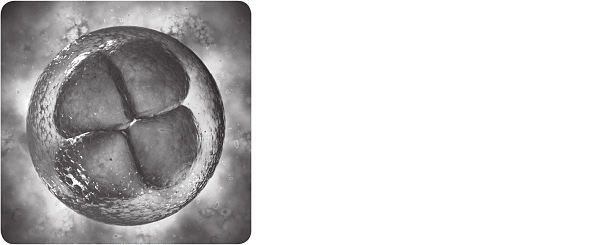FRIDAY, DAY 5
SEXUALITY AND REPRODUCTION
Meiosis
While the overwhelming majority of cells in the body regenerate through mitosis, the sperm and egg cells reproduce through another series of events called meiosis. This process is critical for reproduction, because that’s how chromosomes from each parent combine to create a new, unique individual.

In mitosis, a cell takes four steps to divide and produces two identical cells with 46 (diploid) chromosomes. In meiosis, this cycle occurs twice and forms four daughter cells that each contain one (haploid) set of 23 chromosomes. But before the cycle even starts, each of the chromosomes duplicates to become a pair of chromatids joined by a connecting centromere; at first glance, it looks something like the letter X. During prophase, these chromatids shorten and join up with a pair from the other parent. At this point, the chromatids begin crossing over, or swapping genetic material. This process explains why you may have your mom’s eyes and your dad’s curly hair, for instance.
After metaphase, anaphase, and telophase, two daughter cells, each with one diploid set of chromatids, are left. Now a second meiotic division occurs to split each of these in two. These chromatids do not duplicate; instead, they’re split, reducing the number of chromosomes per cell to half. That leaves four daughter cells, each with a haploid set of new chromosomes—23 per cell instead of 46. Then fertilization combines two cells, each with half the number of chromosomes needed to produce a unique person.
ADDITIONAL FACTS
- The word meiosis, which is pronounced “my-OH-sis,” is derived from the Greek meioun, which means “to diminish.”
- The chromatids’ process of crossing over is called recombination.